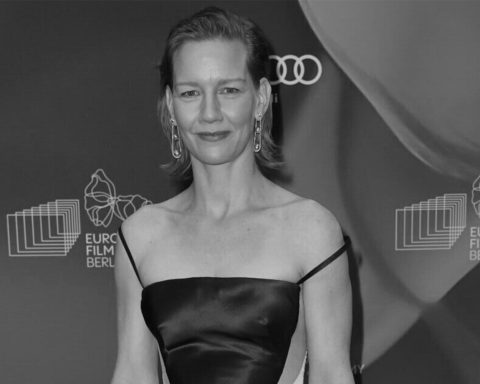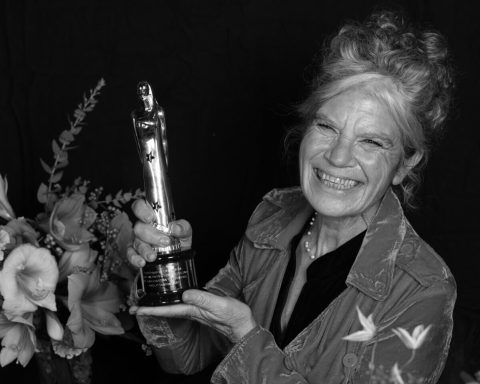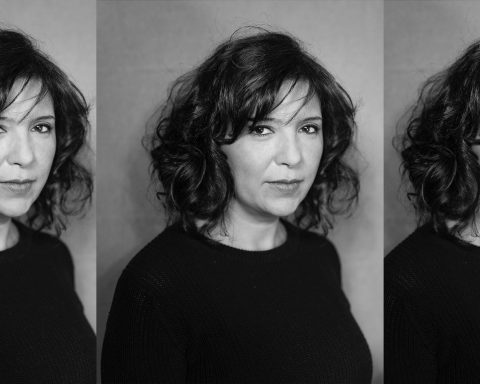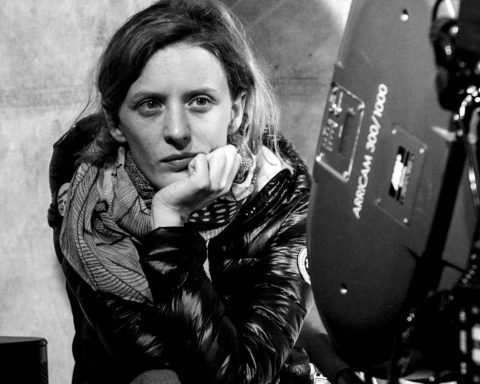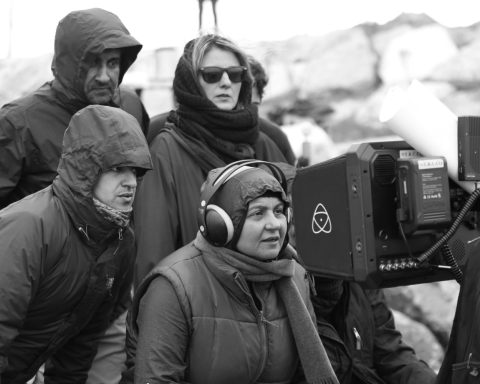UK writer/director Claire Oakley debut feature “Make Up” will have its world premiere at the London Film Festival on October 4.
“Make Up” follows teenager Ruth (Molly Windsor) who travels to a seaside holiday park to be with her boyfriend Tom. In the eerie off-season at the resort, she starts to suspect Tom has been cheating on her and befriends a mysterious woman named Jade.
“Make Up,” shot entirely on location in Cornwall, England, was made with the support of the BFI, BBC Films and Creative England via the iFeatures scheme. Quiddity Films founder Emily Morgan, whose credits include Rungano Nyoni’s “I Am Not a Witch,” produces “Make Up” after collaborating with Oakley since 2011.
Oakley started her career as a runner and assisting directors like John Crowley and Bernard Rose; she also worked as a script reader. Her five short films, “Pumeza Matshikiza: Tuning In” (2016), “James’ (2014), “Tracks” (2014), “Physics” (2012) and “Beautiful Enough” (2011) have played at more then fifty festivals worldwide. In June 2019, Oakley was named a “Screen International” Star of Tomorrow. She is also the co-founder of Cinesisters, a peer-to-peer mentoring group for female directors. Her projects in development include an adaptation of Tessa Hadley’s short story “The Swan” (developed at TorinoFilmLab) and an adaptation of Laura Kaye’s novel “English Animals,” to be written by Emily Marcuson.
Wendy Mitchell spoke to Oakley before her film premieres at the London Film Festival.
Where did the initial story idea start for you?
Claire Oakley: About seven years ago, I dreamt I was following a girl with red hair. Each corner I rounded, she disappeared around another one. I didn’t know who she was and I could never quite reach her. The dream struck me and I started to write around it, trying to figure out what was important to me about that feeling of being in an unknown place, pursuing someone or something without knowing why. It became a bit of an obsession and sustained my writing for years. Unsurprisingly, perhaps, it grew into a story about someone searching for one thing and finding something else entirely.
What were the main themes you were interested to explore?
C.O.: For me, it was always about fear and desire, but particularly about the strange hinterland where the two meet. I was interested in the uncanny and a sense of dissolving reality and I wanted to use these cinematically.
We don’t see Cornwall on screen much, and certainly not the sort of staff quarters that you are showing. Why was Cornwall the right setting, and do you have personal connections to the area?
C.O.: The idea of repetition and doubles was part of the story that I wanted to show visually. I liked the idea of Ruth, my main character, being surrounded by a maze of identical, pre-fabricated caravans. And I wanted to contrast this highly artificial environment with the natural wildness of a remote part of coastline. I spent some of my formative teenage years in Cornwall, so it felt right and I liked the fact that it has its own identity and language. I used this in the story to help the park feel like a closed community where Ruth would feel like an outsider.
A character like Shirley seems so hilariously specific. Did you do any research or interviews with real holiday camp workers to get that authenticity?
C.O.: My producer Emily Morgan and I spent a blissful couple of weeks visiting every coastal caravan park in Cornwall, Devon and Dorset in order to find the perfect location, and we met just about every caravan park owner in the West Country. So Shirley is an amalgamation of some of the people we met. With Kai, one of the workers on the park, a lot of his lines were inspired by phone conversations I had with a guy who was selling caravans on Gumtree. Kippa was inspired by some kids who lived in the flats I was living in when I was writing the script.
How was it making the film through the iFeatures scheme?
C.O.: I loved being part of the iFeatures scheme. It was an intense year of writing and rewriting, pitching and re-pitching. After a decade of writing alone, it was very invigorating to have so much feedback and encouragement and so many strict deadlines. I don’t think that I would have explored the ideas within the film so thoroughly and deeply if it hadn’t been for the scheme and the support of the execs.
How did you come to cast Molly and why was she right for the role?
C.O.: I showed a very early script to casting director Olivia Scott-Webb, who just won an Emmy for Fleabag. I had worked with her since my first short film in 2010. She sent me back a link to the BBC drama Three Girls, saying that she thought Molly Windsor would be perfect for the role. Almost a year later, when I watched Molly’s self-tape, I got a heart flutter. I could totally see her in the role. I was drawn in by the way she listened and reacted to the other lines and how naturalistic her style of acting was. When we met, it was clear she had thought about the character deeply and that she worked from the inside out, considering emotions and making them real.
What do you think is your style as a director in terms of how you work in prep and on-set?
C.O.: We only had a few hours of rehearsal with each of the actors, but it was a chance to meet, talk and come up with ideas. I tried hard not to allow those conversations to reduce possibility in any way – the purpose of them was to open things up. In preparing with Molly, we discussed other stories, things that had happened to our friends or families and our own memories, and in this way we developed a shared emotional language that we often referenced on set. The film is about unexpressed desire and this helped us to explain feelings you can’t quite put your finger on. We didn’t do much improvisation on set, but when any of the actors had new ideas for lines or how they might go about a scene, we tried them out. In terms of my own prep, I painstakingly mapped out how I wanted each line or image or beat in the film to make me feel. It was a very worthwhile process because I was then open to changing anything as long as it was going to evoke the right feeling.
How did you want to use genre elements without tipping fully into a genre film?
C.O.: The world I was interested in exploring was internal, in that it was psychological and emotional. I knew that in order to get my story and ideas across I would need to dip into the surreal. I usually think in images rather than in words and I used the images as building blocks to get across a feeling. For instance, there is a scene where Ruth is overwhelmed and we cut to a dark seascape where we see a wave forming and growing. The image is an expression of Ruth’s emotional and psychological truth in that moment. The genre elements grew out of developing the story in this way, being bold, trusting the images and thinking about sound. There are moments of horror and body horror in the film, but they grew organically out of the emotions of the character.
How did you think about the visual style you wanted with the film and how did you discuss this with your DoP Nick Cooke? Were there specific references of other films or works?
C.O.: Nick and I worked from photographs – many by American photographer Todd Hido –, images in prose (often from Fear by Stefan Zweig) and some films (we looked closely at Jessica Hausner’s Hotel). We used them as touchstones and built up a reference pool for each scene. We also got snowed into the caravan park during an early recce courtesy of the ‘Beast from the East’ and spent the week walking through every scene in the film. We got dangerously cold, but it saved us a lot of time on set and we came up with many new ideas.
Was it hard to find a crew that had a 50/50 gender split? Why was that important to you?
C.O.: It wasn’t a concrete aim for the film, I just wanted to work with talented people who were passionate about the story. We didn’t discriminate in terms of gender during the hiring stage, we went with people we felt understood the story and could bring something unique to the film. But it ended up that eight out of the twelve heads of department were women. The set was a very open and collaborative environment, partly I think because we were all living on site, but also because it felt like a balanced mini-society.
How does Make Up represent the stories you want to tell as a director?
C.O.: It is a good example of my interest in psychology and identity. I was able to investigate the space between the known and unknown, which is something I would like to continue to explore. I’m interested in showing what is happening under the tedium of daily life and in using bold imagery and strong, even gothic, atmospheres to describe psychological states. And one day, I’d love to make a monster movie.
Who are the directors that inspire you, from the past and today?
C.O.: I am a fan of Joanna Hogg, Kelly Reichart, Andrea Arnold, Malgorzata Szumowsa, Jessica Hausner, Jane Campion, Debra Granik, Lynne Ramsay, Chloe Zhao, Claire Denis and the late Nic Roeg, whose biography I read during the shoot.
You’re also one of the founders of Cinesisters, can you tell us more about that?
C.O.: Cinesisters is a peer to peer mentoring group for female filmmakers moving from shorts to features. It started as four of us meeting in a sitting room to share our experiences and grew from there. We now have more than 150 members and meet to discuss a different topic each month. A really nice, unexpected benefit of it is that it is a real confidence boost turning up to industry events and knowing half the room. Hopefully, all our members feel that.
What did it mean for you to be selected as a Screen International Star of Tomorrow?
C.O.: It feels very good to be recognized for my filmmaking. I think it is a great thing that Screen does, bringing attention to all these brilliant people year after year. It is really encouraging, especially now that I’m sitting down to write the next thing.
What’s next?
C.O.: I’m reading a lot, I’m intrigued by directing TV and I’d love to work in a writers’ room. I am also developing a few feature projects, some of which I am writing, some of which are being written by others.
Photo credits: Jaime Simonds





